Materials for exterior finish differ in variety of types and forms. Particularly popular in recent times gain relief coatings capable of.
Working with such materials is somewhat more difficult than with ordinary ones, it requires a certain idea, the possession of skills for such work. But the result is worth the effort, as it creates an original, stylish surface with a non-standard look.
One of these coatings is textured facade paint, the use of which differs significantly from conventional technology application of external coatings. Let's consider it in more detail.
Textured paint is an external coating that creates a relief surface with a different type of pattern and volume. At the same time, the result is determined not only by the composition of the paint. The appearance of the coating largely depends on the method of application, as well as on the shape of the tool used.. A surface is created in which several properties are harmoniously combined - color, degree of gloss, type and size of the applied relief. There can be a great variety of possible combinations of these properties, which makes each use case original, unlike the others.
In order for the material to have similar qualities, an unusual physical composition is required - high viscosity, the presence of various fillers (for example, ordinary river sand).
It is the fillers that make it possible to hold a certain shape, not to spread over the entire surface or not to drain to the ground. The height of the relief can be quite large, and the size of the filler grains determines the ability of a given composition to form a pattern of varying degrees of volume.
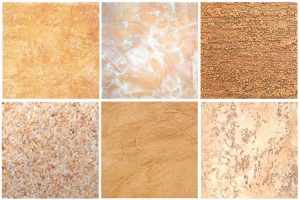
In addition, the application method itself allows you to create completely different types of textures from the same material. In this matter, there are a huge number of options - the size of the tool, the type of pattern, binding to geometric shapes or complete chaos - all methods are good in their own way and can be used, you only need to have the technique of applying textured paints.
Textured paints can be used on different types of substrates:
- Drywall.
- Metal.
- Stone, etc.
In addition to decorative qualities, textured paints perform other functions inherent in exterior coatings:
- Protect walls from water penetration.
- Provides steam output.
- Exclude the occurrence of mold, fungus, etc.
Thus, structural paints are the same exterior coatings, but with a deeper decorative effect.
Types of textured facade paint
Textured paints differ in size and type of filler. It is he who makes it possible to create a certain structure of the paint layer, to imitate some natural textures.
For example, paint "bark beetle" imitates the surface of wood damaged by insects. The “fur coat” or “lamb” effects are also widespread, having a uniformly rough relief of various heights.
Outdoor use somewhat limits the possibilities of textured paints, as weather or atmospheric conditions intervene in the situation. We have to work as quickly as possible, so some types of coatings that are successfully implemented on internal surfaces cannot be performed on the facade.
Most often on today's market there are textured paints based on water-dispersion acrylic mixtures. They best combine performance, price and performance. However, some manufacturers are successfully making textured solvent-based paints using traditional, time-honored materials. Almost all external coatings are certified, have all the necessary qualities, fully comply with the declared characteristics.
Features of textured facade paint
Application textured paint for outdoor work has its own characteristics. For example, relief surface does not require a perfectly flat base, shallow dents or other flaws will be masked by a specific coating pattern.
At the same time, the paint layer is thicker than usual, which requires the use of special compounds that facilitate drying. In addition, textured facade paints have increased strength, resistance to abrasion, mechanical stress.
NOTE!
If necessary, textured paint can be done independently, for which it is necessary to mix facade paint with putty in the required proportion, add filler - sand, marble chips, etc. The main thing is that the materials are made in the same company, match each other.
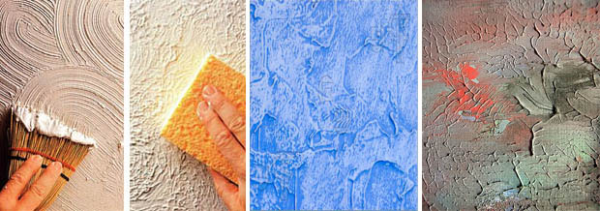
Advantages and disadvantages
The advantages of textured paint are:
- The ability to form a unique surface pattern, embody any fantasy.
- In the presence of the old coating is not best quality you can mask surface flaws, hide cracks or potholes.
- A more durable coating layer than usual.
- High vapor permeability, moisture protective properties.
- High frost resistance.
- Coating durability.
However, there are some disadvantages:
- The need for application skills. The technology is simple, but it may not work the first time, so it is best to start from inconspicuous sections of the walls.
- High material consumption, which at the same time means high costs.
The advantages and disadvantages of textured paints are quite typical for many finishing materials and do not limit the demand among consumers.
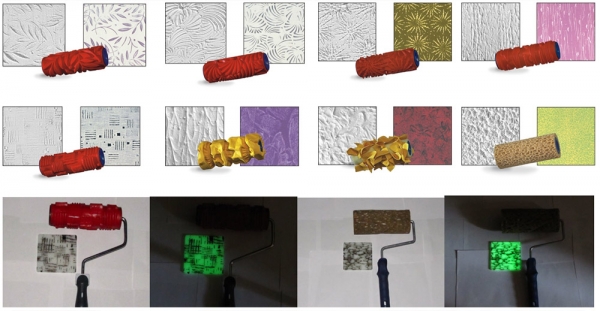
Application tool
For textured facade paints, a mechanical tool (spray gun) and different types are used. hand tools, which include:
- Rollers with different types skins.
- Spatulas rubber and metal, straight or serrated.
- Hard brushes with short pile.
The use of brushes is ineffective, since the brush is designed to smooth and uniform distribution paints, and the specificity of textured compositions requires the formation of a relief.
A grater is often used to form the “bark beetle” structure, which makes it possible to form grooves and stripes characteristic of this type of relief. You can also use a rubber or Teflon spatula.
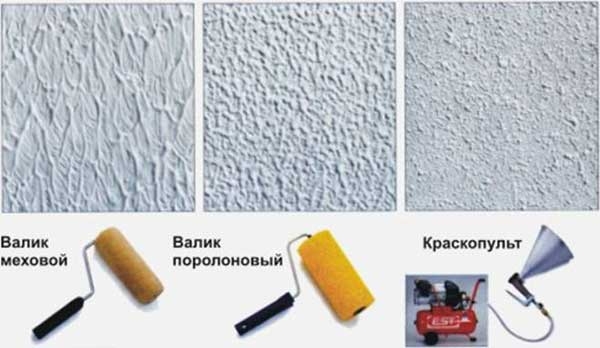
Surface preparation
Before starting work, it is necessary to free the surface of the walls from all foreign attachments, fixtures, brackets, lanterns, etc. It is recommended to remove trim from window and door openings.
To apply textured paint, it is not necessary to have a perfectly flat surface.. If the flaws on it are small and deep, comparable to the height of the relief, then it is not necessary to make any preparation.
However, if there are delaminations or flaking of the surface, they should be removed, why with a spatula it is necessary to remove all problem areas. The resulting dents and irregularities should be plastered and a layer of deep penetration primer applied. A layer of plaster should be kept for at least a week to complete the crystallization processes and remove alkali from the composition.
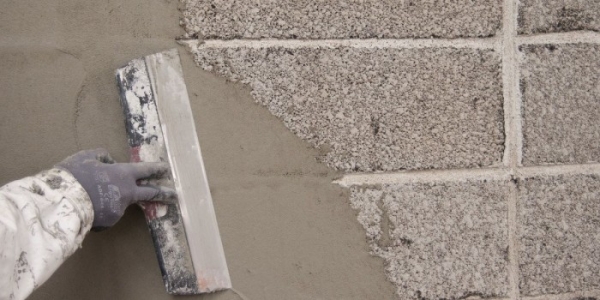
Surfaces previously covered with oil paints or enamels should be cleaned of old layers and carefully primed.
Application technology
When using a spray gun (spray gun), a surface with a uniform roughness is obtained. In this way, it will not be possible to apply a specific pattern, but this method is optimal to reduce time and increase labor productivity.
Manual application of textured paints is done with one of the selected tools. The roller makes it possible to create a structure with fine relief(if the roller is smooth) or with a larger one (if a skin with a long pile is worn).

Using a spatula makes it possible to create various geometric shapes that are repeated in different variations or sizes. At the same time, the presence on one wall of a large number of heterogeneous relief elements is visually perceived as a chaotic heap, sloppy work.
It should be remembered that any, even the most asymmetrical, pattern is subject to certain laws and must have some kind of logic or repeatability. Practice shows that not too complex figures look most impressive, having approximately equal area, not too large.
When choosing a pattern, you should constantly limit yourself so as not to overdo it with too intricate and sloppy elements.
The use of texture facade paints creates a full-fledged exterior coating that has high performance combined with an enhanced decorative effect. The complexity of application, increased paint consumption is fully justified by the result, which creates a stylish, original look of the facade of the house.

In the absence of skills in working with such materials, it is better to invite a specialist, or at least start working from the back walls, invisible from the street. In any case, the result will be a unique pattern that adorns the walls of your home.
Useful video
Applying textured paint with your own hands:
In contact with
Textured determines how the facade will look. In order for the surface texture to be special, special materials are used. From these components, the names textured, textured, as well as structural facade paint appeared. The definition depends on what filler is in them.
When textured paints are used to paint a surface, its appearance will be determined not only by the composition of the coloring matter. It will also depend on how the paint was applied, and what specific technological method was used in this case.
Application methods
More often, textured facade paint is applied with a roller in one layer. Spatulas, sponges, combs and "pneumatics" - pneumatic spraying are also used. With this or that method of application, a different amount of paint is spent, and this must be taken into account.
facade textured can range from 500 to 1500 g / m2. This is explained by the fact that the thickness of such a layer can reach 10 mm. Such a large thickness allows you to paint walls that have not been pre-cleaned. All defects are hidden by textured paint for facades.
In this case, the paint consumption is large. But, how much time can be saved on the fact that cleaning and puttying of surfaces is not done.
Although the structural facade paint can be applied in thick layers, the vapor permeability remains normal. There are practically no barriers to the natural regulation of humidity. Compared to ordinary facade paints, our paints provide walls with greater resistance to mechanical stress. They are therefore often used for painting surfaces that are subject to high abrasive wear.
Facade textured paint, made on the basis of aqueous acrylic dispersions, has proven itself very well. The negative effect of such compounds on the body is minimal, because they do not contain a volatile organic solvent. Due to this, textured facade paint can be used inside some rooms. Before applying, carefully read the composition of the product.
Textured facade paint can be applied both to completely new and previously painted surfaces. The surface material can be concrete, drywall, brick, wood. Structural facade paint is also applied to the plaster.
Characteristics
A surface painted with textured paint will look different using different paint application techniques. And this requires skill.
To achieve the "bark beetle" effect, a Teflon spatula is used. It is constantly dipped into the water, and the grains of the filler are carefully pulled out to avoid the appearance of grooves.
There are simpler methods of staining. For example, the use of a structural roller for coloring. You don't have to be a professional to use this tool.
Pneumatic spraying is performed when the pressure is set to 4-6 atm. Nozzles with a diameter of 3-6 mm are used. When resorting to this method, care should be taken to ensure that the scaffolding is at a proper distance from the surface to be painted. Thus, it will be possible to prevent the formation of unpainted areas.
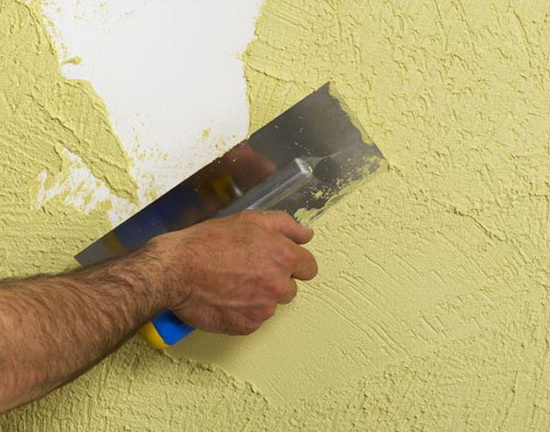
As for the structural facade paint, it is recommended to use it in cases where it is necessary to make the treated surface embossed.
The use of textured paint is just the perfect solution in cases where the appearance of even walls is tired. Use texture paints for internal works still not recommended. Structural paints are applied to the ground coat.
In the event that the plinths are leveled with mortar or processed, facade water-dispersion paint is used. The amount of this paint required for the job depends on how smooth or porous the surface to be treated is. In addition, the method of staining also has an impact.
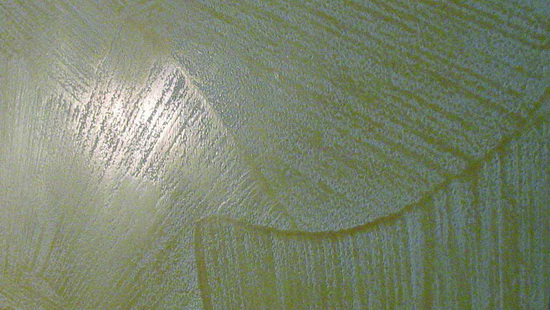
Conclusion
Painting not only changes the appearance of the building to a large extent.
Also, the facade is protected by paint from negative external influences, and its service life becomes longer.
The main thing is correct and how to apply it. Then you can not worry about the fact that the surface will look great and last for many years.
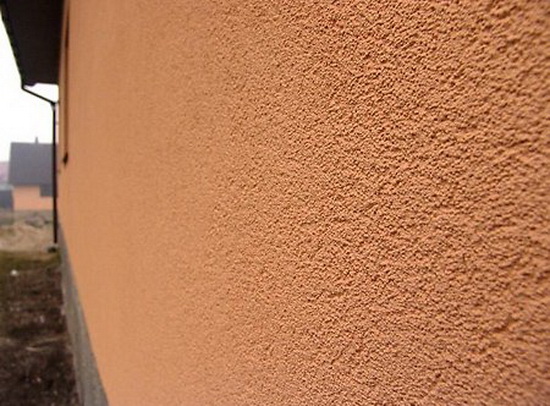
As you know, the facade is the main part of the house, and the impression of the building itself, and of its owner, is formed precisely after the first glance at the frontal part...
By appearance facade panels for exterior decoration are different. There is also a significant difference in cost. Many are attracted, for example, by reinforced plastic foam facade panels...
Man is so arranged that it is not enough for him just to have his own Vacation home or a cottage, a roof over his head, he also wants the design of his house ...
High demands are placed on the materials used for finishing facades. Unlike materials for interior work, they must withstand the effects of temperature extremes, precipitation, dust and dirt, while maintaining a beautiful appearance.
One of these materials is textured facade paint. What is it and how to use it?
What is texture paint
Textured facade paint consists of a filler and a binder. It has pronounced protective properties and allows you to create an imitation of another material: wood, stone, etc.
As a filler, crumbs or granules of minerals, vinyl (plastic), silicone and other materials are used. Acrylic (polyacrylate) most often acts as a binder, it can also be silicate glue (liquid glass) or silicone.
Kinds
Textured facade paints can be different in composition. This depends on how they are used. Most of them are water-dispersion (VD), such as the domestic VD AK 1180.

Vinyl
Used for outdoor work. With the help of vinyl paint it is difficult to get a smooth relief, it is too plastic. Vinyl compounds have high adhesion, that is, they easily “stick” to different surfaces. They also protect well from external influences. The disadvantage is low vapor permeability.
Acrylic
Acrylic paints do not contain a volatile solvent and are water-based, so they can be used indoors. However, before use, you must carefully read the composition to make sure the paint is safe.
A plus acrylic compounds- their high plasticity, so with their help it is easy to make a relief surface. They are also easy to dilute to the desired consistency and can be tinted independently. Minus - weak protection against ultraviolet radiation and mechanical stress.
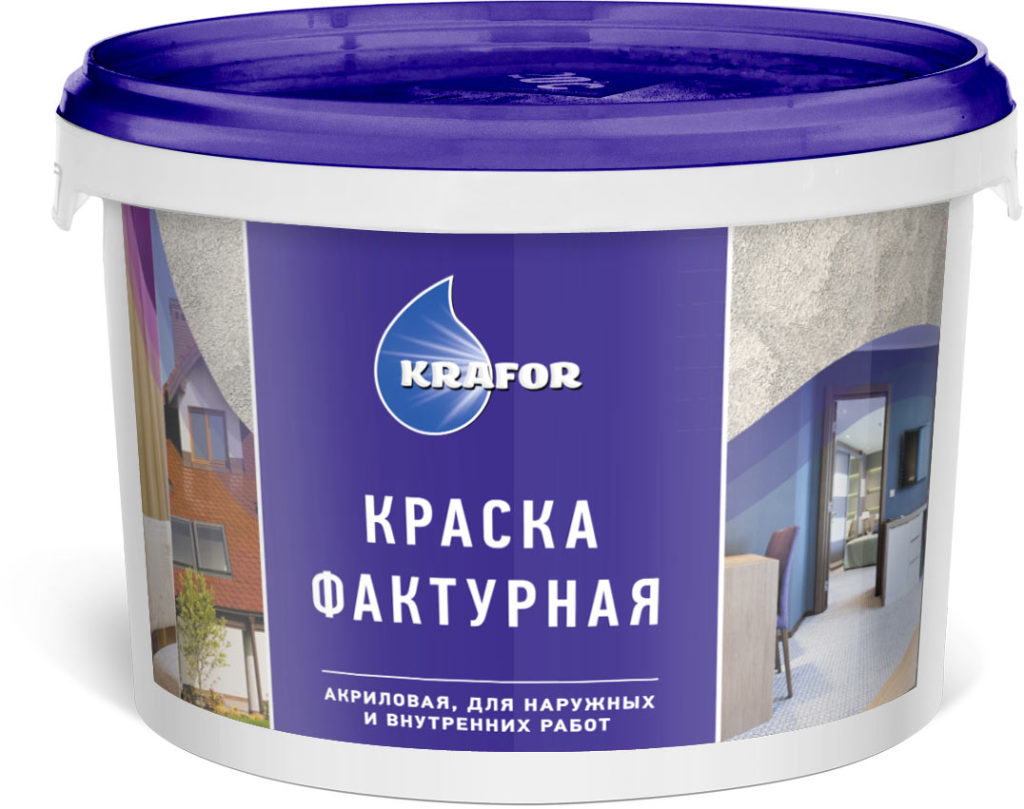
Silicate (polymer)
Liquid glass is used as the base of the paint. Such paints form a film that protects the facade from external influences, including moisture, but have good vapor permeability. The disadvantage is high consumption, but such a coating is strong and durable.
Silicone
Effectively hide surface defects, due to good plasticity, you can create the desired relief and structure. Silicone coating is strong and durable, protects the facade well, does not fade.
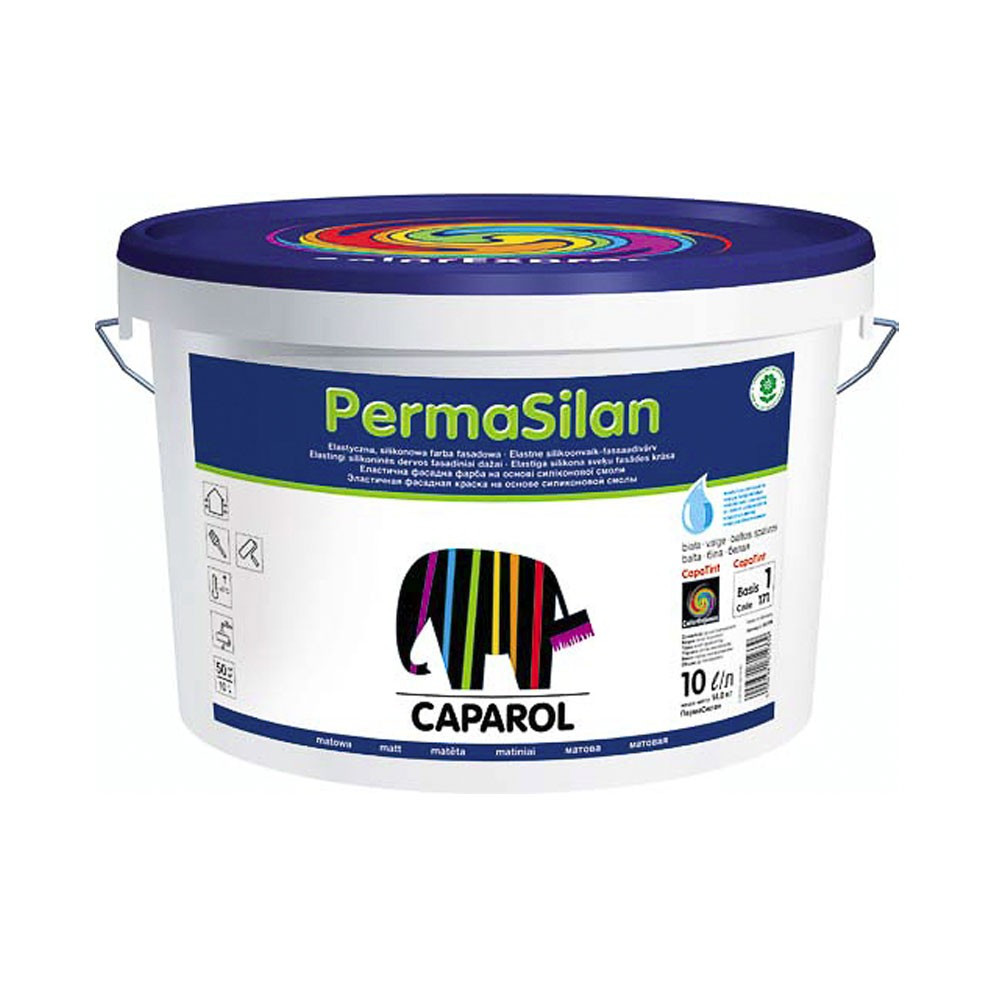
mineral
They are based on cement. They have good vapor permeability, while being resistant to moisture, have a pleasant structure. The disadvantage is instability to sudden temperature changes, which can cause cracks.
Advantages
The main advantage of textured facade paint is that it hides defects. At the same time, the wall can not be previously cleaned of the old coating and not plastered, if it is in a satisfactory condition. Peeling or flaking coatings must be removed or the new coat of paint will fall off along with the old finish.
Important! To protect against mold, special primers or coatings must be used. As a rule, they are transparent and do not change the color of the coating.
Textured facade paint is more resistant to mechanical stress than conventional paint. Therefore, it can be applied to other surfaces, in particular, those that are subject to abrasive influences. It can be applied to various surfaces:
- wood,
- brick,
- concrete,
- drywall,
- plaster.
Textured paints have good vapor permeability, so moisture does not linger in the walls.
These compositions do not emit harmful substances, do not have a pungent odor, and do not support combustion.

To paint a wall, you do not need to have any special skills, it is just as easy to create the desired relief or pattern. Most paints are easy to tint to get the shade you want.
Flaws
Like any material, textured paints are not without flaws.
- The consumption is greater than that of a conventional facade: textured requires about 500 g / sq.m, ordinary - about 200 g / sq.m. The layer can reach 10 mm in thickness.
- Due to the high consumption and due to the higher price of the paint itself, such a coating turns out to be quite expensive.
- Dust and dirt linger in irregularities, therefore such a wall requires more frequent maintenance and cleaning than a smooth one.
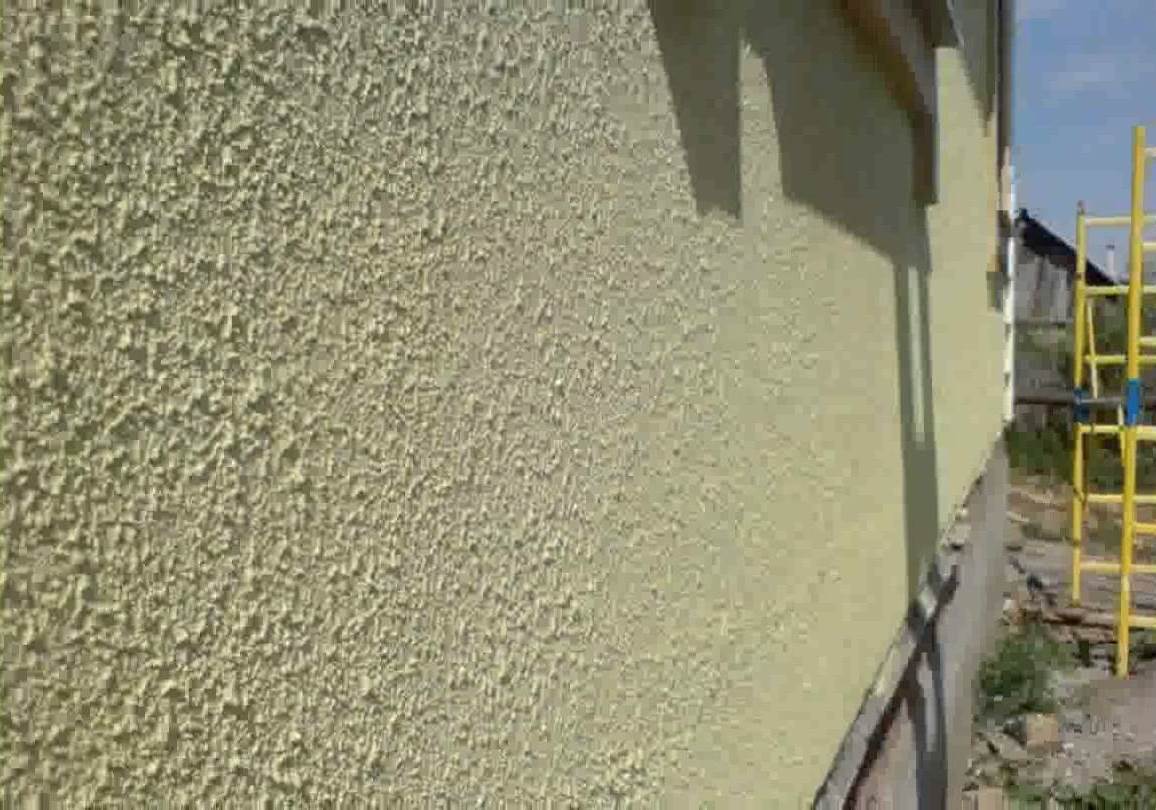
How to use
Apply textured paint in different ways:
- roller,
- spatula,
- sponge,
- comb,
- applicator,
- trowel,
- sprayer (spray gun).
Depending on the method of application, a layer of different thicknesses is obtained, that is, different consumption, and different decorative effects, which are shown in the photo below.
Sponge
A foam rubber sponge can hardly be called a full-fledged tool for applying textured paint, but it is suitable for creating a relief. To do this, first the wall is painted with a spray gun or roller, then the top layer is allowed to set. After that, the sponge is pressed to the surface, creating the effect of a fur coat. This is an old but still relevant technique.
Roller
Using textured roller with different nozzles (rubber, fur, foam), you can get completely different textures.
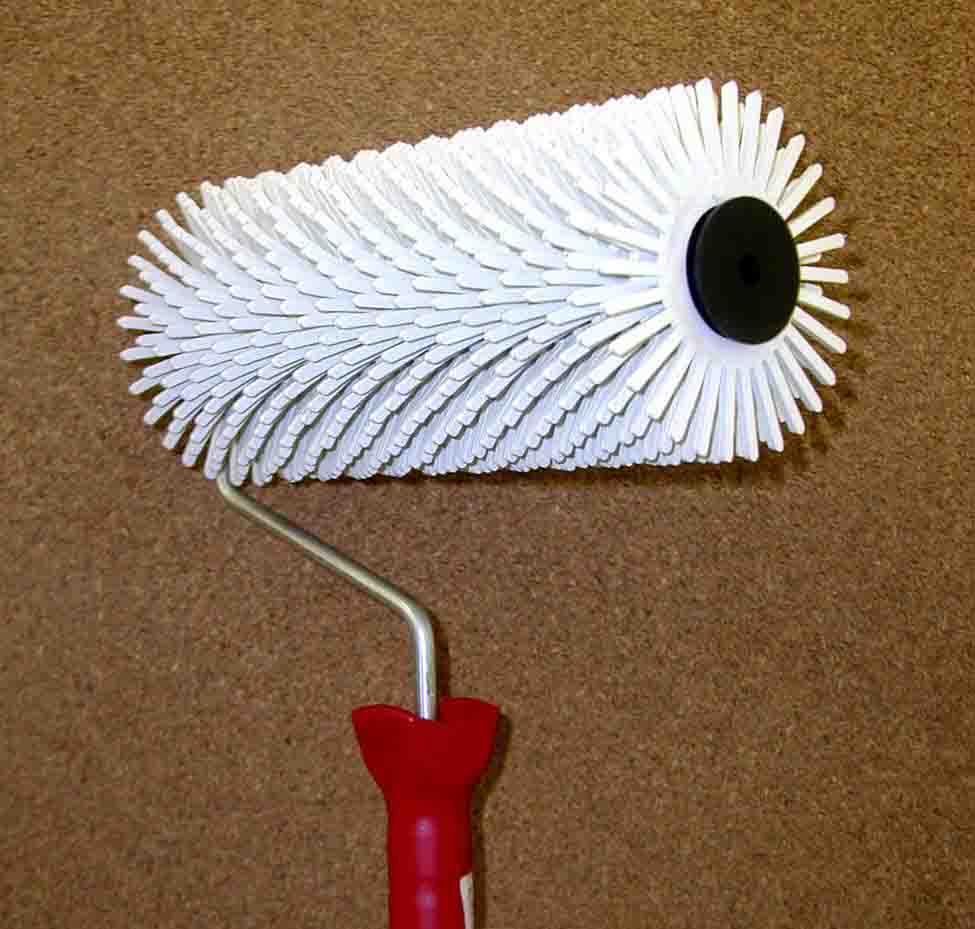
Watch the video to see how this roller is used. The disadvantage of this method is that the paint layer is thick, which increases the drying time.
Trowel
They work with a trowel by changing the force of pressure and making wave-like movements. In this way, you can get an imitation of the skin. There are different attachments for leveling trowels. Instead of a trowel, you can use a regular metal or other spatula. The effect of "bark beetle", that is, a surface dotted with grooves, like a tree eaten by a beetle, can be achieved using a Teflon spatula.

Applicator
The embossed applicator can create a texture that resembles wood. When working with an applicator or sponge, it is better to paint the wall in several stages, otherwise the paint in one area may have time to dry while processing another.
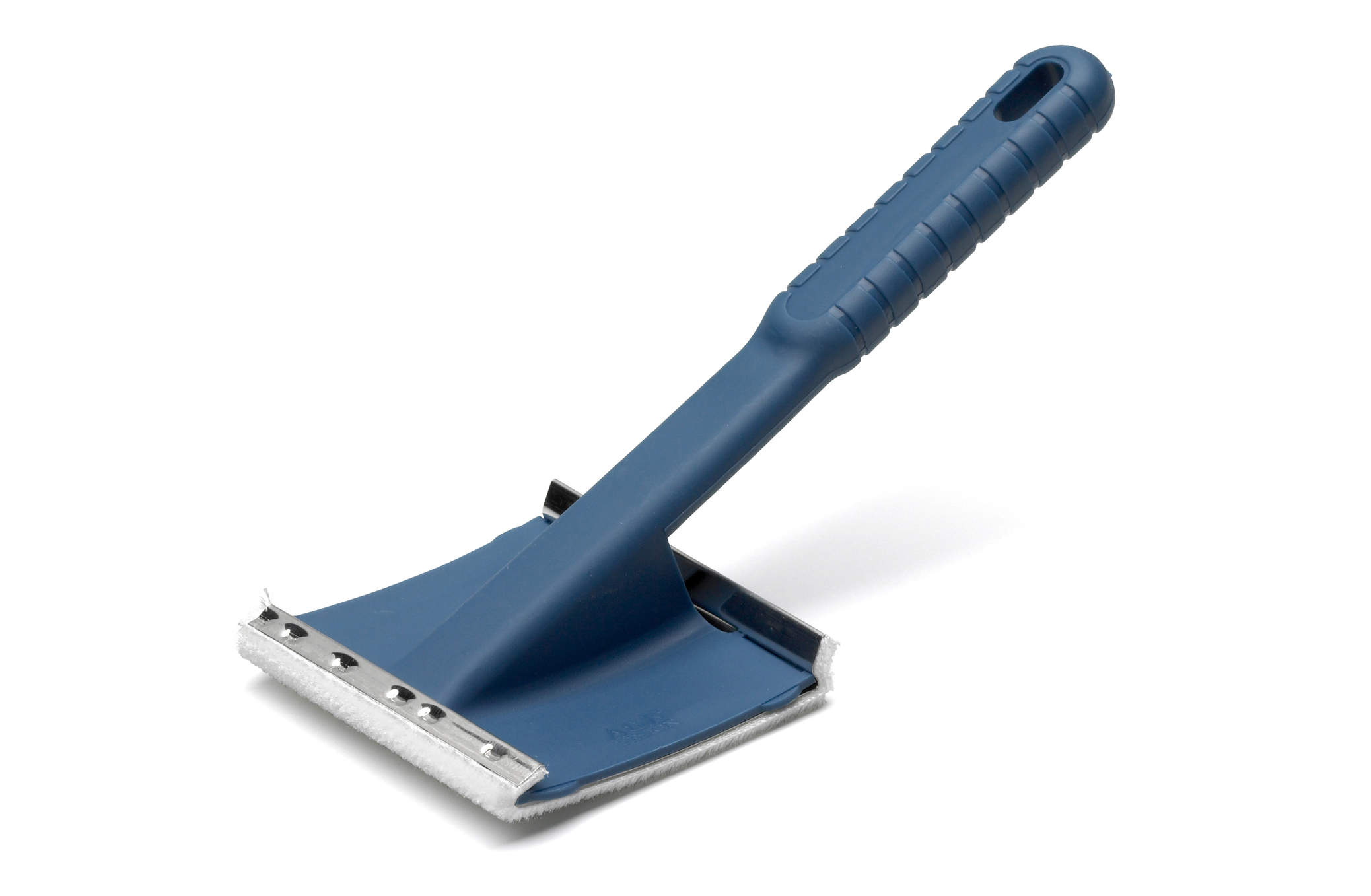
Airbrush
This method requires some experience to cover the wall evenly, suitable for large areas and can significantly reduce costs. After spray painting, other tools can be used to make the surface decorative.

Attention! When working with a sprayer, it is necessary to use protective equipment: goggles, a respirator, a protective suit.
Some brands of paint
Fassadenfarbe Relief
Fassadenfarbe paint based on an aqueous copolymer dispersion is produced by Feidal. It can be ordinary (Feidal Novatik Fassadenfarbe Relief) and silicone (Feidal Novatik Silikon Fassadenfarbe Relief), sold in buckets of 8 and 17 kg, filled with Omyacarb chalk, titanium dioxide.
The advantages of this paint are relatively a short time drying (24 hours), environmental friendliness, lack of organic solvents, no smell, high vapor permeability, application without streaks. The price per kilogram is from 110 rubles. The consumption of the usual variety is 0.6 kg / sq.m.
Fassadenfarbe Relief in production white color, it can be tinted, the manufacturer recommends Feidal Vollton und Abtonfarbe tinting dyes for this. It is not recommended to use dyes from other companies.
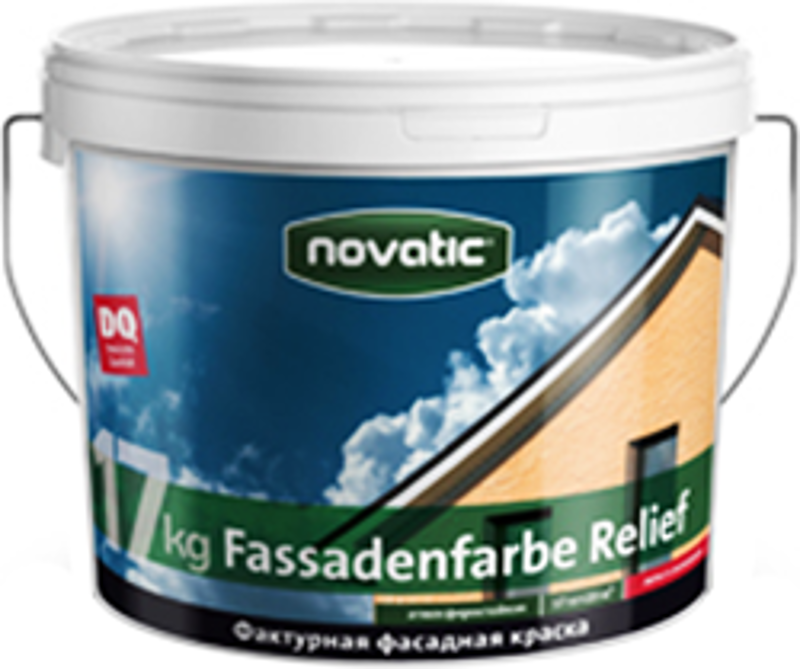
VD AK 1180 facade VGT
Paint VD AK 1180 facade VGT - water-dispersion, available in the colors "Snow White" or "Super White", it does not turn yellow over time, it can be tinted with VGT dyes. It is used for facades and wet rooms, VD AK 1180 paint has high adhesion to various surfaces. Consumption is about 160-180 g/sq.m. in one layer.
The composition contains the fragrance "Apple". VD AK 1180 VGT paint is for sale in buckets of 1.5, 3, 7, 15 kg. The price per kilogram is from 75 rubles.

Conclusion
With the help of facade textured paint, you can not only protect the walls of the house from external influences, but also decorate them by making them embossed, imitating wood or stone. To obtain different textures, different tools are used. When buying it, you need to take into account not only the price, but also the composition - paint on a different basis and with different fillers has different properties.
How to complete the exterior decoration of the house? Use a finish that gives the surface of the walls an aesthetically attractive appearance, sets a beautiful background for the entire structure and protects the building from external rainfall for a long time. Structural facade paint can be used as a final finish. Its main advantages are a rich color palette and an interesting texture.
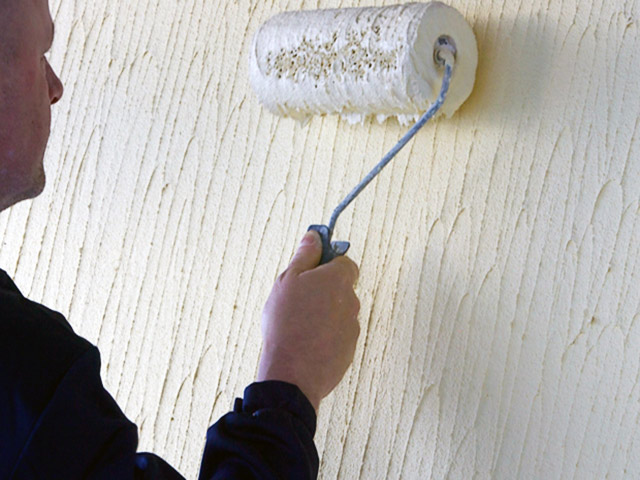
Varieties of paint material
Manufacturers offer an extensive range of paints for outdoor home decoration. All materials differ in binding components, composition, consistency, color and method of applying a relief pattern to the walls. There are the following materials for painting facades.
Vinyl
Used exclusively for outdoor work. The binding component is a vinyl filler, or plastic. They have high adhesive properties, but have low permeability. The advantages include the possibility of applying vinyl materials to any surface and good protection from negative external influences. The paint is difficult to work with: the plasticity of the material makes it difficult to apply a textured pattern.
Acrylic
Have water base and a rich color spectrum. They are very popular due to their plasticity. You can create intricate reliefs of any complexity. The components are easy to dilute to any consistency and shade using color paste. The composition does not contain harmful substances and is completely safe for health. Acrylic paints are poorly protected from exposure to sunlight and chemical solvents. 
Silicone
These outdoor paints are very durable. They reliably protect facades from negative factors, are resistant to fading and moisture, vapor-permeable. Silicone paint material has good plasticity and viscosity, thanks to which the walls of the house can be given an original volumetric texture. Such a structural facade paint well masks the defects and flaws of the treated surface.
polymeric or silicate
The main component of the material for exterior painting of facades is liquid glass. It has high vapor permeability and good adhesive properties. At the same time, decorative polymers repel moisture, dust and dirt, have a long service life, reliably protect walls from external influences, but work requires a significant consumption of materials.
mineral
These coloring compositions are made on the basis of cement. They are vapor-permeable and moisture-resistant, beautifully fit into the texture pattern, and have an attractive relief. But the mineral components are unstable to sudden temperature changes, and as a result of winter frosts, the pattern may crack.
When choosing finishing materials, it is necessary to consider which surface the paint will be applied to. Usually the manufacturer indicates for which facades this or that material is suitable. Textured paint for facades is a reliable decorative composition that both decorates the walls and protects them from many negative factors.
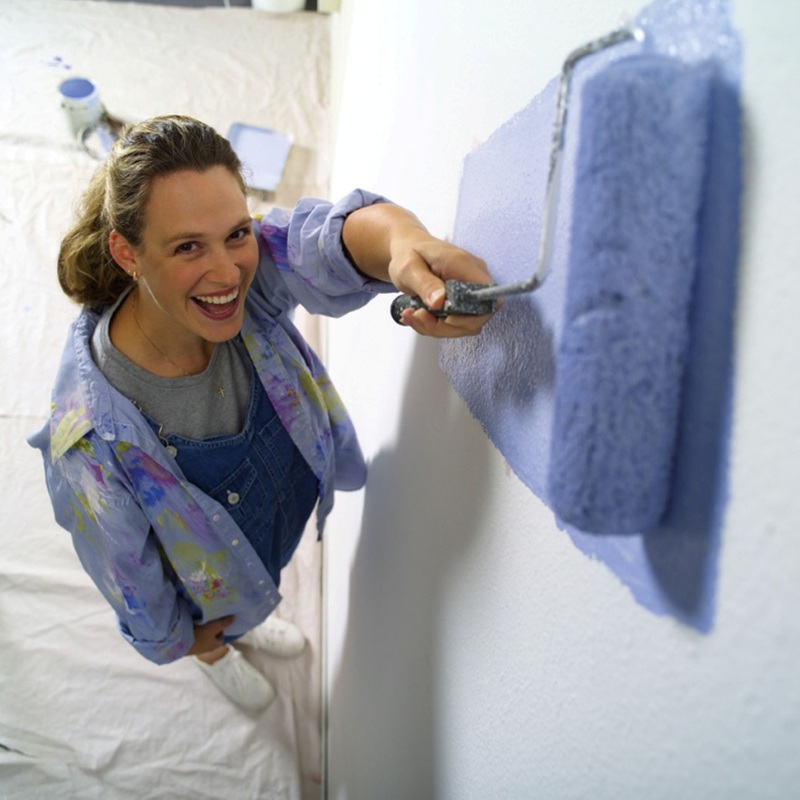
Application options
Structural paint for holding finishing works applied to different surfaces- concrete, brick, plastered, wooden. Walls can be new or previously treated with textured composition or plaster. Much depends on the application technique and the tools used. For work apply:
- Rollers. Hardware stores sell a wide variety of nozzles with interesting patterns designed for facade decoration. This method is simple, so you can quickly create original reliefs yourself.
- Trowels. They are used when applying coloring compositions of a thick consistency, as if rubbing them into the surface of the wall. Due to the different force of pressure on the trowel, a pattern is obtained on the wall, similar to the canvases of expressionist artists.
- Applicators. A fairly simple option for applying a texture pattern. First of all, the entire material is applied to the surface of the walls, and then an applicator with a textured pattern is used and it is passed over the entire surface of the outer walls.
- Airbrushes. Used for work with more liquid paints, if the tool is electric. When using pneumatic spray guns, any textured substances can be applied. Only specialists in facade finishing can work in this application technique.
- Teflon spatulas. The tool is periodically moistened with water and gently passed over the surface of the facades in order to draw filler particles from the mixture, forming a structural pattern. Using this application technique, you can get the popular “bark beetle” relief.
![]()
Appearance finished surface directly depends on the consistency, viscosity and adhesion of the selected coloring composition. Using various tools and methods for forming patterns, it is possible to give facades original volumetric reliefs.
Benefits of using volumetric finishes
With the help of structural decorative paint, facades can be painted in any color, set an interesting direction for the pattern, and use combined options for carrying out work. The relief coating has important advantages that help to preserve the beautiful appearance of the facades and prevent the negative impact of external factors. Advantages of textured paints:
- Painting can be done without careful surface preparation. The relief coating layer is up to 10 mm, covering minor flaws.
- Almost all paints are characterized by good permeability, moisture resistance and adhesiveness.
- Decorative paint better protects walls from external influences than plastering, prevents the penetration of moisture and repels dust and dirt.
- Textured materials can be applied to all surfaces and create a large number of patterns and shades.
- Paints are suitable for tinting and mixing with other components, they do not emit toxic substances.
The only drawback of textured painting of exterior walls can be called a high consumption of materials. To create complex three-dimensional drawings, you need to apply paint in a thick layer. This helps to get the desired effect.
If you are tired of even plain facades, textured decorative paint- an excellent solution to revive the color and texture of the walls and bring an interesting twist to the design of the building.
The renovation has come to an end. But the outer facade remained, so to speak, the face of the house. And often the question arises how to make it not only attractive, but also individual. In fact, there are a lot of options for exterior finishes, one of them is textured paint for exterior work. And it is necessary to dwell on it in more detail.
Facade paint is very different from the one used for interior work, because it is entrusted with a difficult task to withstand all the hardships and vagaries of nature, which is why it is so important to choose a quality manufacturer and in no case save. Facade paint should serve for many years and not lose its qualities.
Properties of facade paints

The main distinguishing characteristic of facade paint can be considered its unique throughput, it releases steam that accumulates on the walls of the house to the outside, while preventing moisture from penetrating inside. Not every manufacturer can boast of such quality.
Paints for outdoor work are distinguished by their external features into glossy and textured, and most often the last option is preferred, since with its help it is not easy to paint the facade of the house, but also to give it individuality.
A feature of textured coatings is that they contain solid particles, due to which various effects are created. Sometimes it can even be a small marble crumb. Therefore, you can make textured paint yourself, for this you just need to mix paint for facades, with decorative plaster but must be from the same manufacturer. This method was often used in the last century, but today it is much easier to buy ready-made paint that does not require additives and solvents.

Characteristics of facade paints
Of course, the decorative component is very important for exterior decoration, but this is not enough, the coating must also meet technical specifications. Such as:
- Resistance to external influences.
- Low flammability.
- Weather resistance.
- No harmful effects on humans.
And profilux textured paint meets all of them, which is why it is popular among specialists. Thanks to its water-dispersion base and acrylic polymer composition, this paint is ideal for both exterior and interior plasterboard work.
Important ! If the selected paint is fassadenfarbe, then the color must be of the same brand. Otherwise, you can lose all the unique properties of the coating.
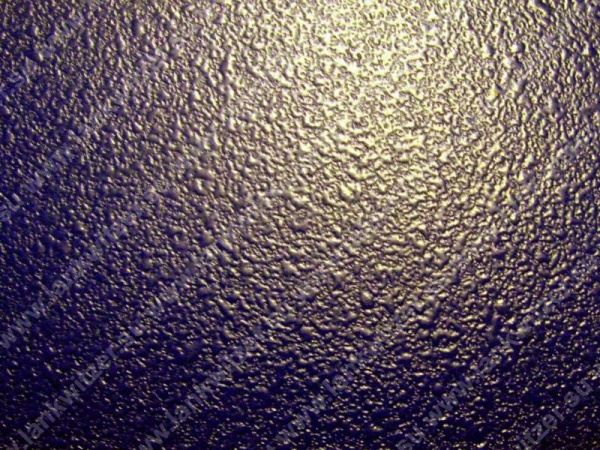
Many facade textured paints for outdoor use tend to fade over time, or take on a yellowish tint. This happens due to the use of low-quality polymers in the production, which lose their properties when exposed to an aggressive environment.
It is impossible not to mention another unique quality of textured paint for facades, namely its ability to hide all the flaws of the wall. Plastered or simply brick surfaces have a very unsightly appearance, and an uneven structure. Because of this, it is often necessary to level the surface before painting, but profilux textured paint, due to its consistency and composition, not only masks defects, but is also able to highlight them qualitatively, turning banal cracks into a craquelure effect.
Of course, the masking effect of facade textured paint is very important, but this does not mean that it can be applied to the surface without preparation. As mentioned above, the facade of the house is constantly exposed to environmental influences, which is why it is so important that not only the coating, but also the base be of high quality.
The use of impregnations and primers is necessary to protect the surface of the wall from the formation of fungus and mold. As a rule, they are colorless and dry in a few minutes, therefore they are not able to change the color of the paint or adversely affect its properties.
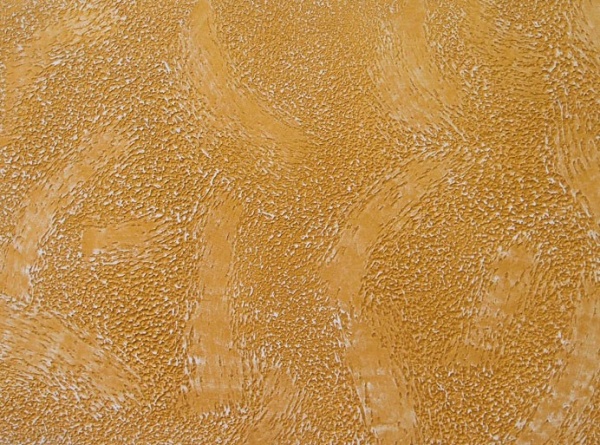
Advice ! If fassadenfarbe relief textured paint is used for painting, then the primer should also be of this brand, since they contain identical functional additives and ideally complement each other.
Methods for applying textured paints
There is a huge variety of colors and textures of facade paints on the market, and even if it was not possible to find exactly the color that you wanted, you can always use tinting paste. With its help, it is possible to create a unique shade that you will not find anywhere else.
Advice ! It is better to entrust the tinting of paint to a special machine that will remember the necessary proportions and be able to repeat the shade if necessary.
There are several ways to apply textured paint on the facade of a house, depending on what effect you want to achieve:
foam sponge
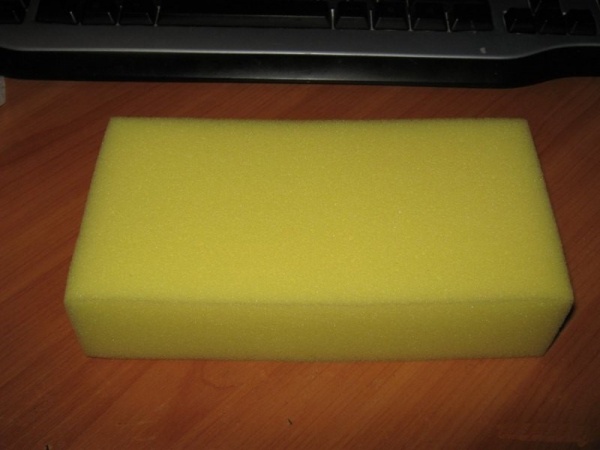
A foam sponge cannot, strictly speaking, be called a tool for applying paint, it rather acts as a tool for creating decorative effect. Therefore, first, the paint is applied with a roller or spray gun, allowing the top layer to seize (an average of 30 minutes) by blotting to create a “fur coat”. This is one of the most frequently used methods in the last century, but has not lost its relevance today.
Leveling trowel
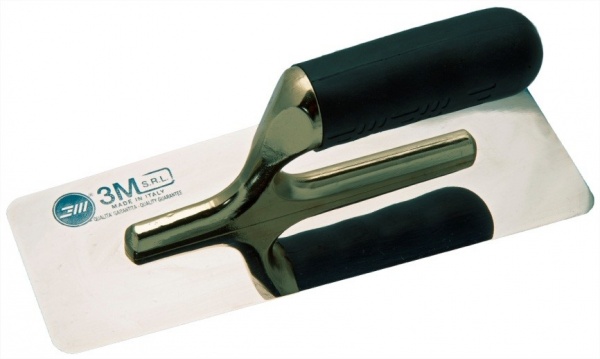
Mostly, this tool is used to level the plaster, but if you use different pressure and wave movements during work, you can get an imitation of the skin. Also, special nozzles with different configurations and textures are sold on the trowel. An alternative to this tool can be a regular metal spatula.
Textured roller

The easiest way and does not require special skills. With this method of painting, the coating layer is somewhat thicker, which is why many paints have a longer drying time, but if you use facade textured fassadenfarbe relief paint, you don’t have to worry about this problem, because thanks to the use of high-quality acrylic copolymer in the composition, the term complete drying is only 24 hours. And the hardening of the upper layer, 2-4 hours, under temperature conditions from +15 to +25 degrees.
The convenience of using the roller is that, depending on the design concept, you can use different “fur coats”, which can be made of foam rubber, fur, rubber or textured. Each "fur coat" creates its own effect and is even capable of applying simple decorative patterns.
The video shows how with a simple roller you can create a wide variety of effects using just one facade paint.
Applicator
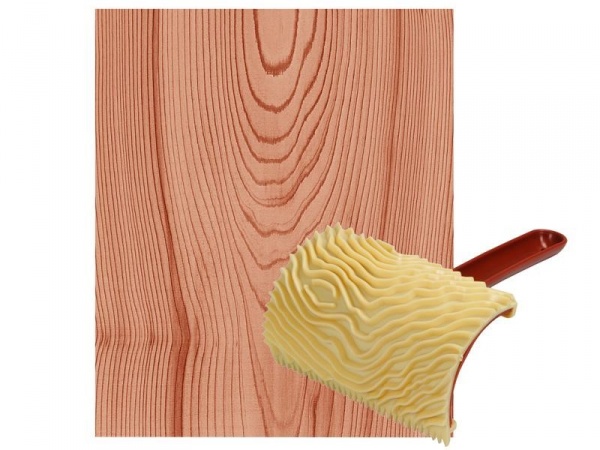
This tool has a corrugated imitating surface that looks like tree bark. It is applied in the same way as a sponge, with a dried top layer, by pressing it to the surface. This method is somewhat longer than others, but the drawing is also more difficult.
Important ! Using an applicator or a sponge, the walls need to be painted in stages, as you may not have time to apply the texture before drying.
Airbrush
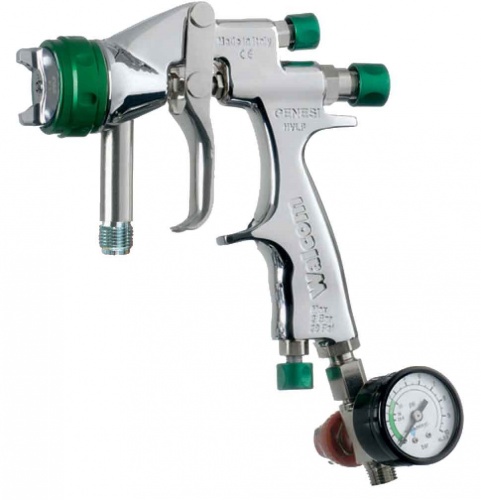
The application of textured facade paint by spraying is a process that requires certain skills and experience, since streaks or gaps can form with different layer thicknesses. The advantage of this method is that the paint consumption is significantly reduced. And if you need to cover large volumes, then this method is the fastest.
Important ! When working with sprayers, protective equipment must be used to protect the eyes and respiratory tract from paint.
Knowing how to use the listed tools, you can not only achieve perfect coverage, but also combine effects. This is often practiced when the facade of the house has a complex design form and it is necessary, for example, to highlight a cornice or a plinth.
Important ! If there is an old peeling coating on the wall, it must be removed with a spatula and sandpaper, otherwise the new coating will not connect to the wall surface, regardless of the quality of the facade paint itself.
Conclusion
In conclusion, it must be said that facade finishing is not only one of the most difficult stages in construction or repair, but also very costly. And so that it doesn’t work out, as in the saying about the miser, it’s better to spend money once on high-quality materials than to restore and redo it every year. Paints, primers, and impregnations profilux have long established themselves both among homeowners and professionals.




















